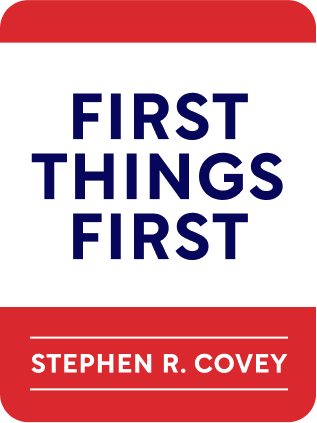

This article is an excerpt from the Shortform book guide to "First Things First" by Stephen R. Covey. Shortform has the world's best summaries and analyses of books you should be reading.
Like this article? Sign up for a free trial here .
Do you think that for you to win, somebody else has to lose? Is there such a thing as a win-win solution?
In his book First Things First, Stephen Covey discusses our tendency to think that if you win, someone else must lose. He takes the opposite stance: there is always a way to reach a win-win solution.
Keep reading to learn about Stephen Covey’s three-step process for reaching a win-win solution.
How to Create a Win-Win Solution
Society teaches us to have a “win-lose” mindset — if you win, someone else must lose. But to reach your goals in an interdependent world, you need to change how you think about winning. Winning doesn’t mean someone else loses; winning means accomplishing your goals, and you can accomplish more if you cooperate rather than compete.
There are three steps to reaching a win-win solution:
1. Approach the problem with a “win-win” attitude: This first step is to adopt the appropriate mindset. To arrive at a win-win solution, you need to first acknowledge that individual success at the expense of the group isn’t true success.
2. Listen first, then speak: The second step involves listening and seeking to understand the other person’s point of view. Don’t speak until you understand all the sides of the issue, and until others in the group are satisfied that you understand.
3. Synergize: The last step is to create a list of alternatives that are better than the solutions that any individual could come up with herself.
What if We Can’t Reach a Win-Win Solution?
Sometimes the three steps are difficult to execute when you disagree with others. Here’s how to troubleshoot each step:
1. Approach the problem with a “win-win” attitude: Think of your differences as an asset. You’ll end up with a creative solution that none of you could have come up with on your own. Go into the discussion with an open mind and commit to keep the discussion going until you arrive at a win-win solution.
For example, say you’re a sales representative. The manufacturing facility you work with has been late delivering its shipments, causing you to make late deliveries to clients. Your clients aren’t happy. You go to talk to the manager of the facility to work out the problem and he tells you he’s been swamped and you’re lucky to get your shipments at all. Rather than get upset, you realize that this man is doing his best. You want him to win. You want your clients to win. And you want to win yourself. You seek a solution that works for everyone.
2. Listen first, then speak: Get into the other person’s shoes — what is the problem from her viewpoint? Identify the key issues that are preventing you from moving forward toward a solution. Figure out what constitutes a “win” for the other person or other people involved.
As the sales rep in the example above, you find out that the demand for the manager’s product has increased dramatically but he has no additional funding from headquarters. Labor costs are up and the manager feels your requested delivery dates are unrealistic. Once he’s done sharing his problems, you share yours. Then, you identify that the key issues are funding, the manager’s relationship with headquarters, and your relationship with clients.
3. Synergize: Keep an open mind and make a list of possible solutions that meet the criteria determined in the second step.
You and the manager create a list of possible solutions. You could estimate what products you’ll need ahead of time to give the facility more time to deliver them. For willing customers, you could deliver partial orders as the products become available. Or you could work together to make the order-processing system more efficient.
Creating a Shared Vision
Every interdependent unit benefits from having a shared vision — it’s important to know: What is the purpose of my marriage? What is the purpose of my family? What is the purpose of my organization? Most problems in families and organizations arise from the absence of a shared vision. People are confused about what goals they’re collectively working toward.
A shared vision taps the creativity, motivation, and initiative of every individual involved. It’s a type of constitution that gives the group clear criteria on which to base decisions. But in order to reap these benefits, groups must create mission statements that articulate a shared vision that empowers everyone. Keep the following qualities in mind when creating your shared mission statement.
Empowering mission statements:
- Focus on a purpose that everyone feels passionate about.
- Come from the heart of an organization, the employees, not the administrative level.
- Are based on universal principles such as fairness, integrity, honesty, and human dignity.
- Address everyone’s needs.
- Address all four human needs: “to live, to love, to learn, and to leave a legacy.”
Developing Stewardship Agreements
Once you have created a shared mission statement, it’s time to create a “win-win stewardship agreement.” This is an agreement that clearly establishes how you will collectively reach the goals set out in your mission statement. You and your group have to contend with five elements and the questions that come with them:
- Desired Results: What outcome(s) do we want to achieve?
- Guidelines: What values, legalities, and limits do we need to be aware of?
- Resources: What money, people, and technology do we have to work with?
- Accountability: How will we know we’ve reached our goal? What criteria will we use to measure our success?
- Consequences: What will happen if we achieve our goals? What will happen if we don’t achieve our goals?
Let’s look at how to approach each of the five elements.
1. Determine Desired Results
These results might be directly related to your mission statement or might be the results desired for a specific project. This step is where the win-win mentality is most at play.
Within this step are three sub-steps that mirror the steps of creating a mission statement:
- Focus on a purpose that everyone feels driven to pursue.
- Address the four human needs (to live, to love, to learn, and to leave a legacy).
- Find out what constitutes a “win” for every stakeholder involved.
2. Establish Guidelines
Guidelines come in a variety of forms, including company policies and procedures. Additionally, you’ll want to take into account the “true north” principles that you’ll adhere to, such as honesty or fairness, and the things you’ll want to make sure to avoid doing, such as mistakes past teams have made on similar projects.
Set guidelines around levels of initiative of members in the group. How much autonomy will each individual have to make decisions? Should members act according to their own judgment and the established guidelines, or should they ask permission before they act?
Groups often forget to establish guidelines around questions of initiative, but doing so avoids many problems. For example, a waiter might have the authority to “comp” a meal to an unhappy customer at his first job, but get fired at his next job for doing the same thing because he didn’t know he lacked the authority to comp meals. To make expectations clear, establish clear guidelines around where members can take initiative and where they can’t.
3. Identify Resources
Know your budget, the people available to help, the time they can devote to the project, the technology at hand, and the systems already in place at the company. Additionally, establish how your group will access these resources and share access when it’s limited.
4. Define Measures of Accountability
Establish how you’ll measure the success of your project. Criteria should measure both quantitative and qualitative goals.
The conversation about accountability should also include how results will be communicated among group members and how individuals can evaluate themselves based on the agreed-upon standards.
5. Understand and Establish the Consequences
First, come to a collective understanding of the natural consequences of either achieving or not achieving the desired results: Who will be affected? Will the company lose money? In a family agreement, who will be impacted if the chores don’t get done? Understand both the positive and negative natural consequences of achieving or not achieving the goal.
Second, establish the logical consequences of either achieving or not achieving the desired results. These are consequences that are decided on by the group: Will employees get a bonus? Will the child who shirks his household duties have to do the family’s laundry for a week?
Both natural and logical consequences have their place, and it’s important to make these clear so that everyone understands what’s at stake.
Checklist: Win-Win Stewardship Agreement
- Desired Results: Figure out what outcome(s) you want to achieve.
- Guidelines: Establish the values, legalities, and limits that will guide your work.
- Resources: Identify the budget, people, and technology you have to work with.
- Accountability: Establish how you will know when you’ve reached your goal. Figure out what criteria you will use to measure success.
- Consequences: Discuss the consequences, both natural and logical, of achieving or failing to achieve your goals.

———End of Preview———
Like what you just read? Read the rest of the world's best book summary and analysis of Stephen R. Covey's "First Things First" at Shortform .
Here's what you'll find in our full First Things First summary :
- How to work effectively, not just efficiently
- Why you need to think more about what you're spending time on than how much time you're spending
- The 6 steps to effectively schedule and prioritize important activities






